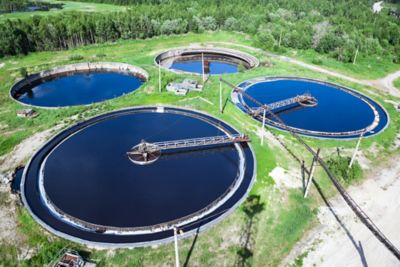How to avoid microorganisms in compressed air?
Hygiene sensitive applications as used in food and beverage companies are trying to reduce the risk of microorganism growth in the final product and therefore also eliminate potential sources of contamination by utilities like compressed air. Food companies nowadays are rightfully concerned about food safety.To stop microorganism growth, it is necessary to eliminate conditions that permit organism reproduction. All microorganisms require the five following factors to remain viable and reproduce. • Nutrients• Proper pH• Gases• Appropriate temperature• MoistureNutrients, proper pH and gases are not affected by the air in the compression process, providing that an oil-free compressor with aftercooler is used. The last two, appropriate temperature and moisture, can directly be linked to or influenced by, compressing atmospheric air.
Appropriate temperature
Heat is lethal to microorganisms, but each species has its own heat tolerance. Mesophilic bacteria and fungi prefer moderate temperatures, between 25 and 40°C. Thermophilic (heat-loving) microorganisms grow at a temperature between 45 and 90°C. During a thermal destruction process, such as pasteurization, the rate of destruction is logarithmic as is their rate of growth. This means that bacteria subjected to heat are killed at a rate that is proportional to the number of organisms present. The destruction process depends both on the temperature and the time required. The high temperature in oil-free compression elements (>180°C) is high enough to significantly reduce present microorganisms. Although the duration of this temperature is not long enough to be considered as sterilizing.
Moisture
It depends on the specific type of bacteria or fungus how much water (vapor) they need to grow. However, all need some form of water to reproduce. In general, they need a relative humidity (RH) of 75% or more. Some can survive and multiply in a relative humidity between 50% and 75%. Below a relative humidity of 50% there is normally no microbial proliferation. In other words, decreasing temperatures and moisture (RH) are both reducing the possibility for creating a viable atmosphere for microorganisms.
Tlakový rosný bod (PDP)
The dew point is the temperature to which air must be cooled to reach saturation. This means a given concentration of water vapor in air will form dew. It simply is a measure of moisture in the air. A dew point is expressed as a temperature on the scale °C or °F. It can be seen as the maximum water content, in grams or ounces, for a standard volume of air at that given temperature. When talking about compressed air, this term is specified as the Pressure Dew Point or PDP. This is important because changing the pressure of a gas, also changes its dew point. The PDP is the maximum water content in the compressed air under pressurized conditions. If the air comes in contact with the product after expansion, which is in most cases the situation, the dew point or water content will be significant lower. In this case the Atmospheric Dew Point or ADP is more relevant. For low dew point requirements different technologies can be used like heatless twin tower desiccant dryers, heat regenerated blower type dryers, heat of compression twin tower, heat of compression rotary drum, refrigerating dryers etc.Some drying technologies, designed to achieve a fixed and very low dew point, can consume 10 to 20% of its connected compressor power.The yearly required energy cost for these drying technologies can represent up to 13.000 EUR per 100kW installed compressor power.A relative humidity of maximum 10 to 20% is in most cases low enough avoid growing organisms. Using relative humidity in compressed air specification instead of PDP on the temperature scale can contribute to a hygiene safe and energy friendly installation.
Conclusion
Microorganisms need a humid environment to grow. The control of the moisture in food is one of the oldest exploited preservation strategies. Food microbiologists generally describe the water requirements of microorganisms in terms of the water activity (aw) of the food or environment.It is important to make a distinction between bacteria and molds. For bacteria a minimum aw of 0.75 (relative humidity of 75%) is generally accepted. For molds a minimum aw of 0.6 (relative humidity of 60%) is considered as safe limit.A specification of pressure dew point with a relative humidity of less than 10% or even less than 20% can be considered as food and hygiene safe. Significant energy savings can be achieved when the right dew point within the available drying technologies is selected and this without jeopardizing food safety or creating hygiene hazardous condition.Finally, based on the graphic below it is possible to calculate the specific pressure dew point to achieve a specific relative humidity (aw) in the compressed air at a given ambient temperature.
Food & beverage pressure dew point microorganisms graph
Whitepaper compressed air and microorganisms
- Compressed air and microorganisms Whitepaper 301.1 kB, PDF

